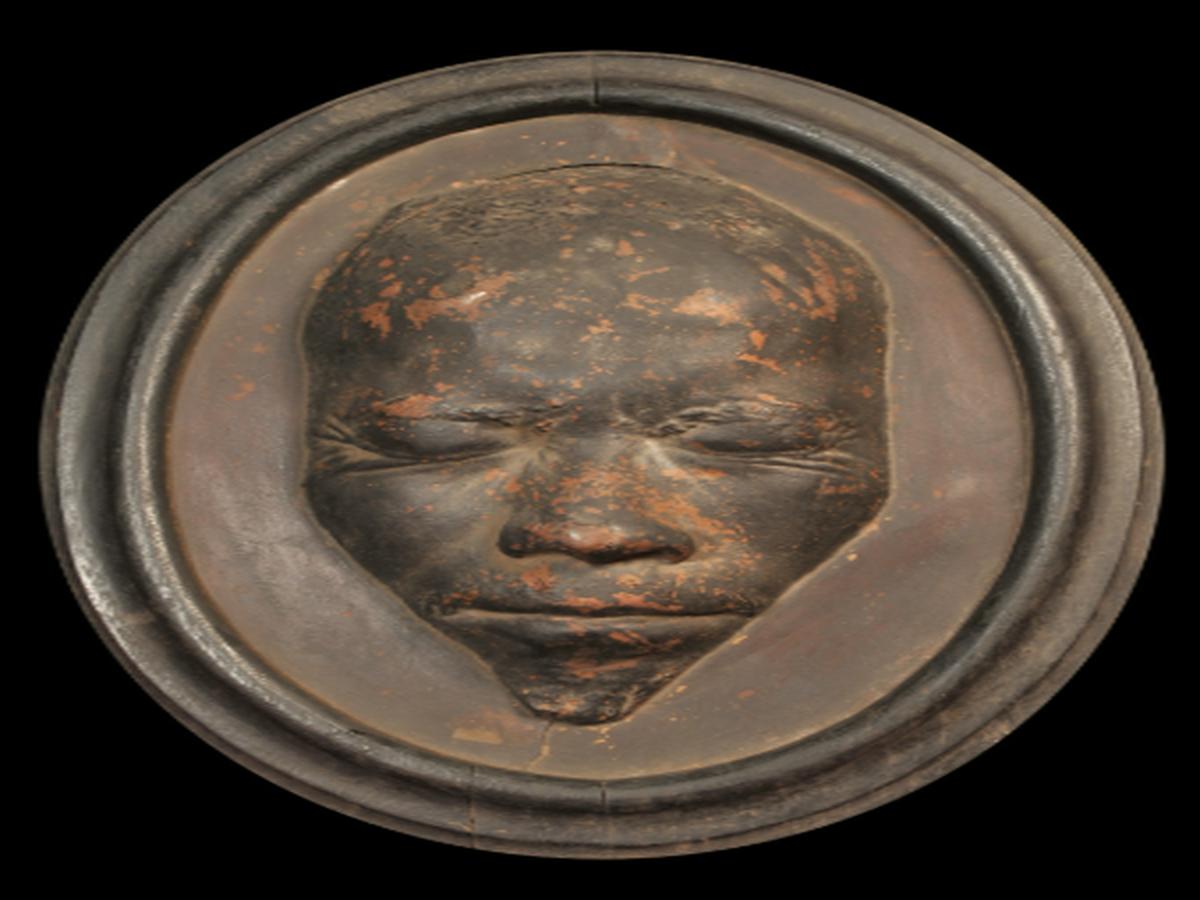State
Tribe Name
Art Type
short description
As a fine showpiece of traditional Himalayan art, the oval metal face mould of Samsak, a man from Ladakh, India stands above the rest. The casting aptly captures the facial likeness of Samsak - thin moustache and neatly trimmed goatee - thus adding charm and realism to the object. No matter who might have made this celebrated mold, a wife or a friend, the name Samsak and the place of origin-Ladakh-were etched at the top, marking the person and embedding the piece securely in the cultural setting of the Bhot tribe. The Bhot tribe, originally from Tibet, is mainly found in Ladakh and also in smaller compartments such as Nepal, Bhutan, and parts of Sikkim.
Thumbnail

Filter Postion
Right
Filter Background
Off
Theme
Filter Header Image

content
Image

description
As a fine showpiece of traditional Himalayan art, the oval metal face mould of Samsak, a man from Ladakh, India stands above the rest. The casting aptly captures the facial likeness of Samsak - thin moustache and neatly trimmed goatee - thus adding charm and realism to the object. No matter who might have made this celebrated mold, a wife or a friend, the name Samsak and the place of origin-Ladakh-were etched at the top, marking the person and embedding the piece securely in the cultural setting of the Bhot tribe. The Bhot tribe, originally from Tibet, is mainly found in Ladakh and also in smaller compartments such as Nepal, Bhutan, and parts of Sikkim.
Tibetan Buddhism has remained the focal point of Bhoti culture and religion, affecting their lifestyle, dramatised performances, and artistic expressions. Metalwork, especially making devotional icons and memorials, is considered a noble art by the Bhots to invoke respect and memory. Face molds like these would probably have had the dual function of memorializing either the departed individual or the deceased community. The presence of facial hair-the goatee in particular-may suggest that Samsak might have had some social or spiritual elevation at community level. These molds would have been exhibited in family venues or communally in local monasteries to care for ancestral worship and continuity of history. This face mold of Samsak is the best blend of artistry and identity across generations and that whole realm of memory and visual narrative is distinct among the Bhot tribes.
Tibetan Buddhism has remained the focal point of Bhoti culture and religion, affecting their lifestyle, dramatised performances, and artistic expressions. Metalwork, especially making devotional icons and memorials, is considered a noble art by the Bhots to invoke respect and memory. Face molds like these would probably have had the dual function of memorializing either the departed individual or the deceased community. The presence of facial hair-the goatee in particular-may suggest that Samsak might have had some social or spiritual elevation at community level. These molds would have been exhibited in family venues or communally in local monasteries to care for ancestral worship and continuity of history. This face mold of Samsak is the best blend of artistry and identity across generations and that whole realm of memory and visual narrative is distinct among the Bhot tribes.
Image Mode
landscape
promoted
On
Verified
Off
